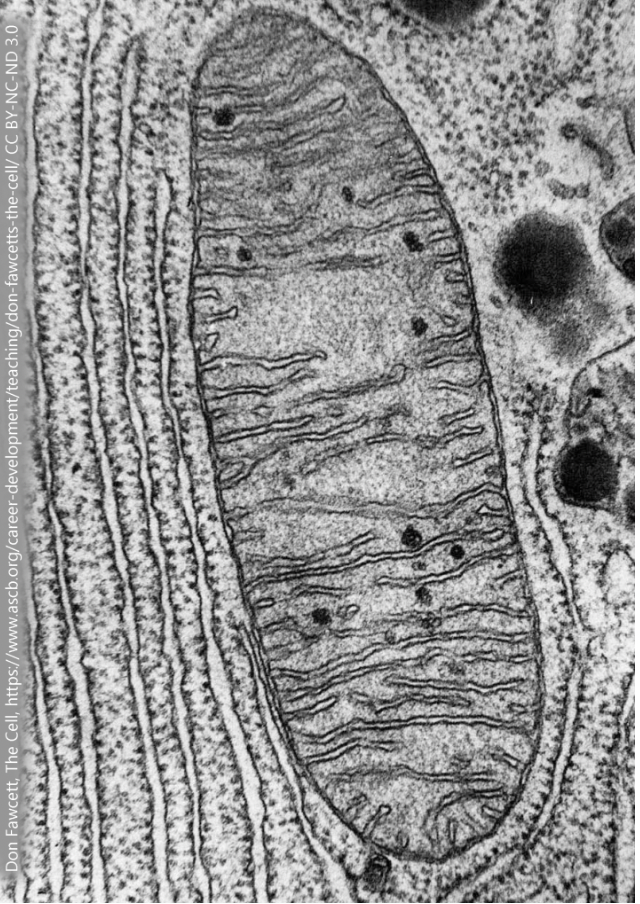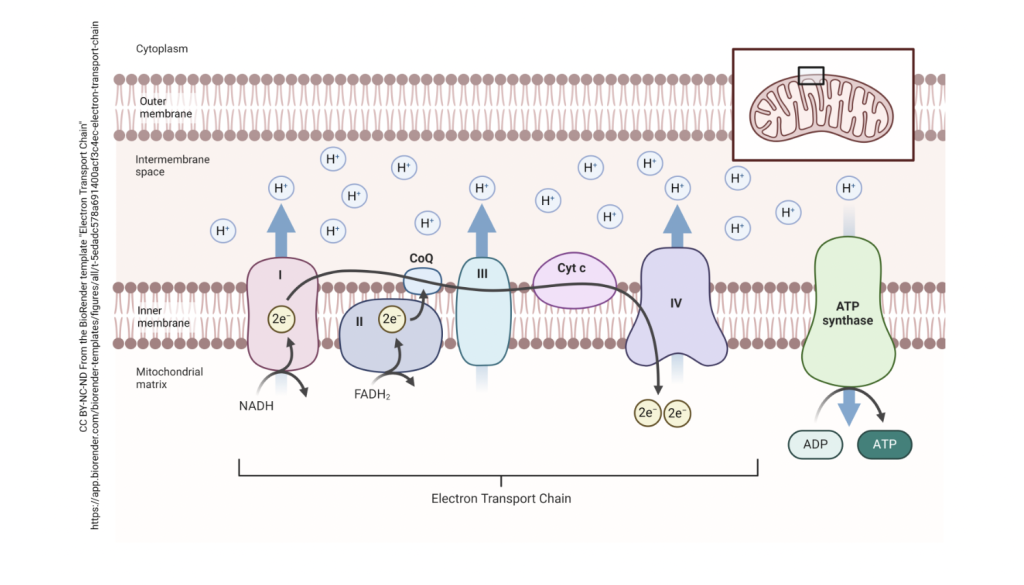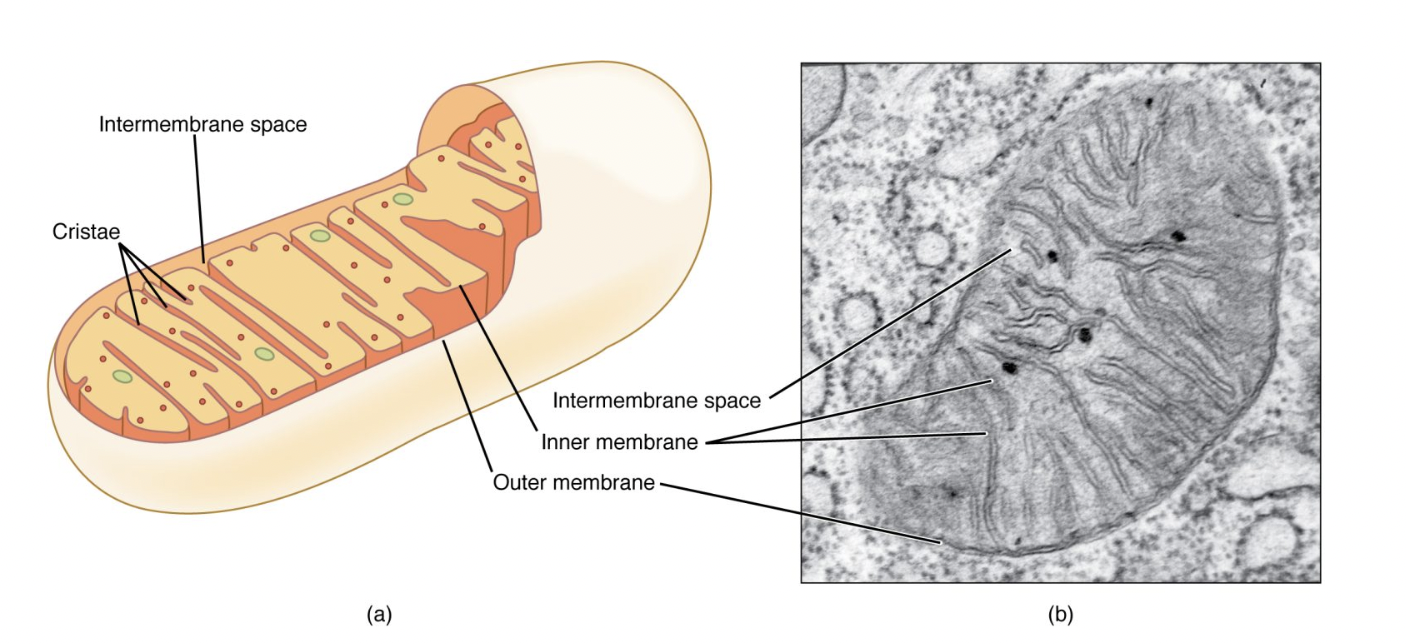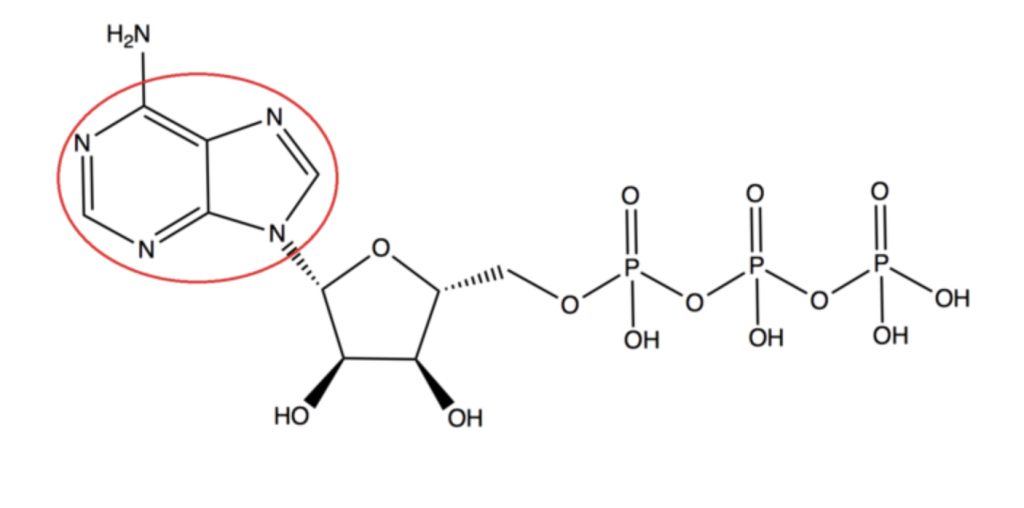Mitochondria in Neurons
Mia Verbeck and Jim Hutchins
Chapter under construction. This is the first draft. If you have questions, or want to help in the writing or editing process, please contact hutchins.jim@gmail.com.

The mitochondria is an organelle often referred to as “the powerhouse of the cell” is located in all eukaryotic cells. These cells can be found in organisms such as animals, fungi, plants, and protists (Algae). Mitochondrion can range from 100 – 1000 per cell depending on the function and type of cell. The main function of this organelle to produce energy for the cells biochemical reactions through a process called oxidative phosphorylation. To truly understand this organelle you must break it down its structure and understand the roles each of them play.
Structure
Outer-membrane
The outer-membrane act as a barrier. It is made out of a phospholipid bilayer. It is highly permeable, meaning it allows many things to pass through such as proteins, ions, ATP, ADP, and most nutrients. It is also very important to keep the the structure of the mitochondria.
Inner-membrane
This also is a phospholipid bilayer however it is not as permeable as the outer membrane. It is very selective on which proteins are allowed to pass. Such as uncharged oxygen, carbon dioxide and water can pass freely while molecules such as pyruvate, ADP, ATP, and certain metabolites needs a transport protein which happens in the inter-membrane space.
Inter-membrane Space
Between the inner and outer membrane resides the inter-membrane space. It is highly concentrate with proton ions. This area is plays a role in protein transport, by importing and sorting other proteins passing through the inner-membrane. This layer is also crucial for ATP production by maintaining an ion gradient.
Cristae
The folds on the inter-membrane increase the surface area and efficiency of ATP production. It is a continuation of the inter-membrane for metabolic reactions.
Matrix
Is a gel-like liquid, which consists of mitochondrial DNA and ribosomes. It also increase the surface area for efficient ATP production.
Mitochondrial DNA (mtDNA)
This DNA is inherited by the mother. It allows the mitochondria to convert food into energy which is essential for ATP production. It also codes transfer RNA (tRNA) and ribosomal RNA (rRNA) which then assembles amino acids into proteins causing protein synthesis.
Ribosomes
The main function of ribosomes is to synthesize protein. It will receive information about the type of protein that is needed from a messenger RNA (mRNA). It then is translated it into a chain of amino acids. The amino acids then forms a long chain which then folds to form a protein.
Function
Oxidative phosphorylation (ATP Production)
Oxidative phosphorylation is a process in which the mitochondria produces ATP. This occurs when our bodies take in broken down food molecules such as glucose and other nutrients. It then goes through a process called the TCA cycle which then create electrons that are transferred through an electron transport chain on the inner membrane. This then causes protons to pump across the membrane creating a proton gradient. In return causes the movement of protons back through ATP synthase, which turns ADP (Adenosine diphosphate) into ATP (adenosine triphosphate) which is a process called ATP synthesis. This allows the mitochondria to deliver energy to other areas of the cell allowing to fulfill it functions making it the powerhouse of the cell.

Media Attributions
- Mitochondria © Don W. Fawcett is licensed under a CC BY-NC-ND (Attribution NonCommercial NoDerivatives) license
- Mitochondrion anatomy © Betts, J. Gordon; Young, Kelly A.; Wise, James A.; Johnson, is licensed under a CC BY (Attribution) license
- Screen Shot 2025-01-22 at 11.55.25 AM
- Electron Transport Chain © BioRender is licensed under a CC BY-NC-ND (Attribution NonCommercial NoDerivatives) license
Takes genetic information from DNA and sends it to a ribosome
Organic compounds that are made up of carbon, hydrogen, oxygen, and nitrogen.


 Adenosine triphosphate (ATP): A molecules that stores energy and transfers it into other cells.
Adenosine triphosphate (ATP): A molecules that stores energy and transfers it into other cells.